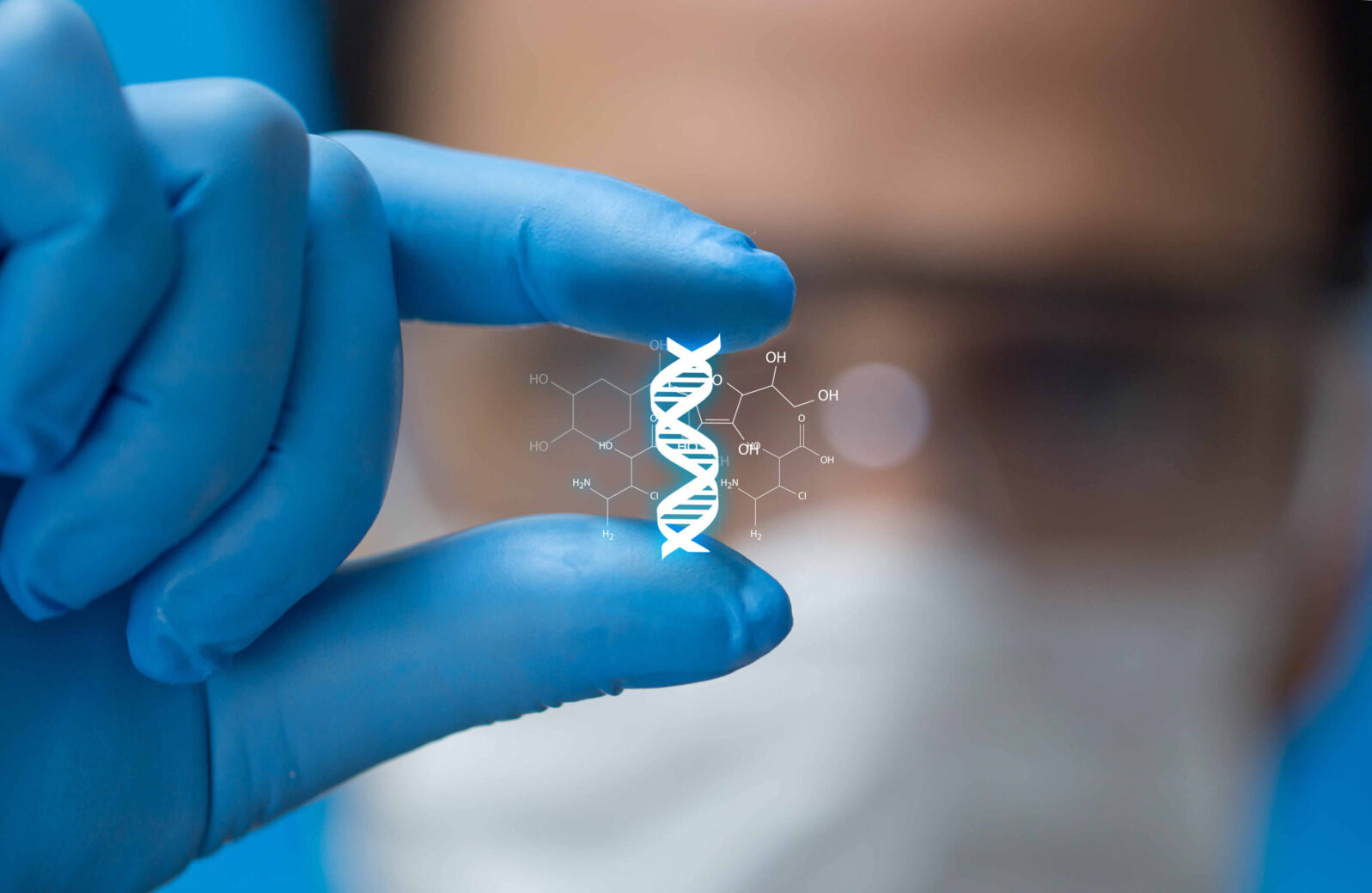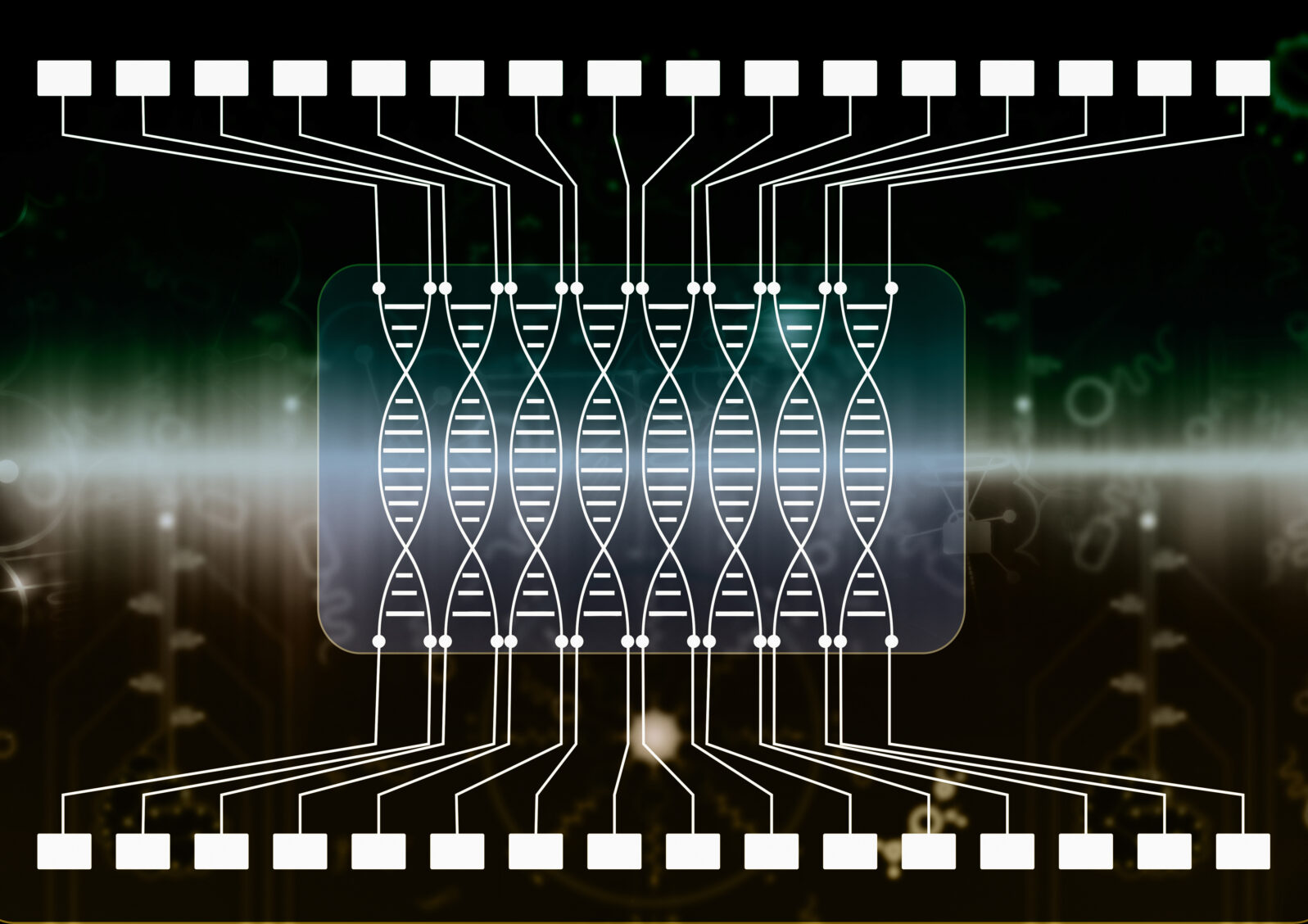Is Computing With DNA the Wave of the Future?
We are running out of conventional space to store information and life forms’ DNA stores it much more efficientlyWhy would we want to compute with DNA? Well, first, we are fast approaching the limit of how small we can make computers. So some scientists are turning to the designs in nature for help:
The issue with transistors is that they now exist at the scale of a few nanometers in size—only a few silicon atoms thick. They can’t practically be made any smaller than they are now.
If they get any smaller, the electrical current flowing through the transistor easily leaks out into other components nearby or deforms the transistor due to heat, rendering it useless. You need a minimum number of atoms to make the transistor work and we’ve functionally reached that limit.
John Loeffler, “What is DNA Computing, How Does it Work, and Why it’s Such a Big Deal” at Interesting Engineering (March 21, 2019)

In 1994, Leonard Adleman used computing with DNA to offer a solution for the infamous “Traveling Salesman” problem, which computers typically cannot solve, though live amoebas can.
Here’s the Traveling Salesman problem:
Given a collection of cities and the cost of travel between each pair of them, the traveling salesman problem, or TSP for short, is to find the cheapest way of visiting all of the cities and returning to your starting point. In the standard version we study, the travel costs are symmetric in the sense that traveling from city X to city Y costs just as much as traveling from Y to X.
The simplicity of the statement of the problem is deceptive — the TSP is one of the most intensely studied problems in computational mathematics and yet no effective solution method is known for the general case.
“The Traveling Salesman Problem (TSP” at University of Waterloo Mathematics
Why is the Traveling Salesman’s problem so hard?
With only four cities, the solution is only three possible routes. But as the number of cities increases, the number of possible answers increases exponentially: for six cities, that would be 360 routes; for eight cities, that number swells to 2520. The TSP is classified as an NP-hard problem (non-deterministic polynomial-time hardness), meaning that as the number of cities grows, the time needed for a conventional computer to solve it grows exponentially as well, due to its increased complexity.
Kimberley Mok, “Amoeba-Based Computer Solves Traveling Salesman Puzzle” at The New Stack (January 21, 2019)
In computer science lingo, it becomes an NP-Hard problem: Solving it could quickly require more runtime than the expected lifespan of the universe. That’s because of the way computers process calculations.
So how do amoebas solve such a problem with no brain and little effort? We’re not sure but a team from Keio University in Tokyo offers some thoughts,
While the idea of such an amoeba-based computing system might seem dubious at first, what is remarkable is that the time it takes the system to calculate optimal solutions to the TSP grows in a linear fashion, even though the number of possible answers is amplified exponentially, and the amoeba seems to do so by processing information in parallel, rather than serially, though the team still isn’t quite sure what exactly makes this system work the way it does.
“The mechanism by which how the amoeba maintains the quality of the approximate solution, that is, the short route length, remains a mystery,” study lead author Masashi Aono told Phys.org. “It seems that spatially and temporally correlated movements of the branched parts of the amoeba located at distant channels are the key. Each of these branches is oscillating its volume with some temporal ‘memory’ on illuminated experiences. Groups of the branches perform synchronization and desynchronization for sharing information even though they are spatially distant.”
Kimberley Mok, “Amoeba-Based Computer Solves Traveling Salesman Puzzle” at The New Stack (January 21, 2019)
Put visually:
In sum, no one knows why amoebas solve the problem much more easily than computers but it might have something to do with the difference between DNA and silicon chips.
What are the general advantages of computing using DNA? It may get past the problem of doing only a single logical operation at a time:
There is no limit to the power that DNA computing can theoretically have since its power increases the more molecules you add to the equation and unlike silicon transistors which can perform a single logical operation at a time, these DNA structures can theoretically perform as many calculations at a time as needed to solve a problem and do it all at once.
John Loeffler, “What is DNA Computing, How Does it Work, and Why it’s Such a Big Deal” at Interesting Engineering (March 21, 2019)
DNA also features economical storage methods:
Because there are four building blocks in DNA, rather than the binary 1s and 0s in magnetic hard drives, the genetic storage method is far more dense, explains John Hawkins, another co-author of the new paper. “A teaspoon of DNA contains so much data it would require about 10 Walmart Supercenter-sized data centers to store using current technology,” he tells Popular Mechanics. “Or, as some people like to put it, you could fit the entire internet in a shoe box.”
Courtney Linder, “DNA Is Millions of Times More Efficient Than Your Computer’s Hard Drive” at Popular Mechanics (July 25, 2020)
It’s also thought to present fewer long-term storage problems:
Beyond that, DNA requires virtually zero maintenance once it’s stored. After all, fossils preserve DNA sequences after spending millions of years underground. DNA storage doesn’t require any energy, either—just a cool, dark place to hang out until someone decides to access it. But the greatest advantage, Hawkins says, is that our ability to read and write DNA will never become obsolete.
Courtney Linder, “DNA Is Millions of Times More Efficient Than Your Computer’s Hard Drive” at Popular Mechanics (July 25, 2020)
How DNA computing works:
What are the problems with DNA computing? The principle current difficulty has been slow speed in practice:
Even though it took moments for Adleman’s solution to the traveling salesman problem to be encoded into his DNA strands in the test tube, it took days of filtering out bad solutions to find the optimal solution he was looking for—after meticulous preparation for this single computation.
John Loeffler, “What is DNA Computing, How Does it Work, and Why it’s Such a Big Deal” at Interesting Engineering (March 21, 2019)
However, the speed is improving as the system is better understood.
DNA-based computing is still very much a project under development. But employing the designs already provided in nature, instead of inventing our own, may help us solve some practical problems more easily.
You may also enjoy: There is a glitch in the description of DNA as software: In contemporary culture, we are asked to believe — in an impressive break with observed reality — that the code wrote itself.
